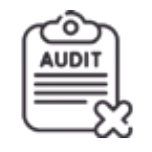Home > Safety as a Service
Establishing sustainable safety behaviours in an organisation goes beyond the development of a safety management system. Companies that achieve good HSE results also pay attention to how safety is practised and perceived.
The SaaS tool assesses the maturity of your organisation's security culture according to the Hudson-Parker safety scale and provides an overview of prevailing safe behaviours and practices...

Organizational culture and accidents are inextricably linked and, ultimately, the severity and frequency of accidents reflect the culture of an organization.
Prof. Patrick Hudson, International Safety Practitioner and Expert
Using our robust experience in QHSE, we developed the SaaS Safety Culture Maturity Assessment tool as a self-evaluation survey framed around 14 dimensions that we believe can be used to describe safety culture in organizations. The assessment tool captures feedback from employees on the current state of the company’s safety practices and standards by rating a set of 9 – 10 assertions related to each dimenson.

As our tool is rooted in a self-assessment methodology, participants are more aware of the behaviours they adopt in the workplace and are encouraged to reflect on their contribution. As well as raising staff awareness, this tool enables management to find out what the organisation is thinking and to measure the degree to which safety principles have been integrated.
Safety culture maturity gaps will be highlighted by analysing the feedback provided. As a specialist, Aegide International will use this feedback as a basis for practical advice on how safety culture can be improved and strengthened within organisations.


Assess the company's approach to measuring its HSE performance against that of others in order to identify internal opportunities for improvement.

Assess the Company’s approach to reporting on situations or activities that have the potential to cause incidents or accidents in the workplace.

Assess the Company’s approach to guiding, influencing, and mobilizing safety behavior and practice in the workplace.

Assess the Company’s approach to analysis and management of factors that can impact the safety, health, and well-being of employees while undertaking their duties.

Assess the Company’s approach to resourcing of the department in charge of health, safety, and environment issues.

Assess the Company’s approach to engaging, collaborating, and coordinating activities with external parties.

Assess the Company’s strategies and schemes to encourage and motivate for good health and safety practices in the workplace.

Assess the Company’s approach to checking whether safety systems and procedures are functional, fit-for- purpose, and adequate for meeting required legal standards.

Assess the Company’s approach to balancingthe costs and benefits of implementing good HSE practices with profitability priorities.

Assess the Company’s approach to reporting, tracking, and investigating incidents, near misses, and accidents.

Assess the Company’s approach to outlining and anticipating the tasks, procedures and measures required to conduct operational activities safely.

Assess the Company’s approach to systematic and detailed examination of its HSE system, policies, procedures and practices for soundness and compliance.

Assess the company's approach to developing the training, skills, experience and knowledge of staff and subcontractors with the aim of improving HSE performance and results in operations.

Assess the Company’s established attitudes and philosophy on safety matters in general.